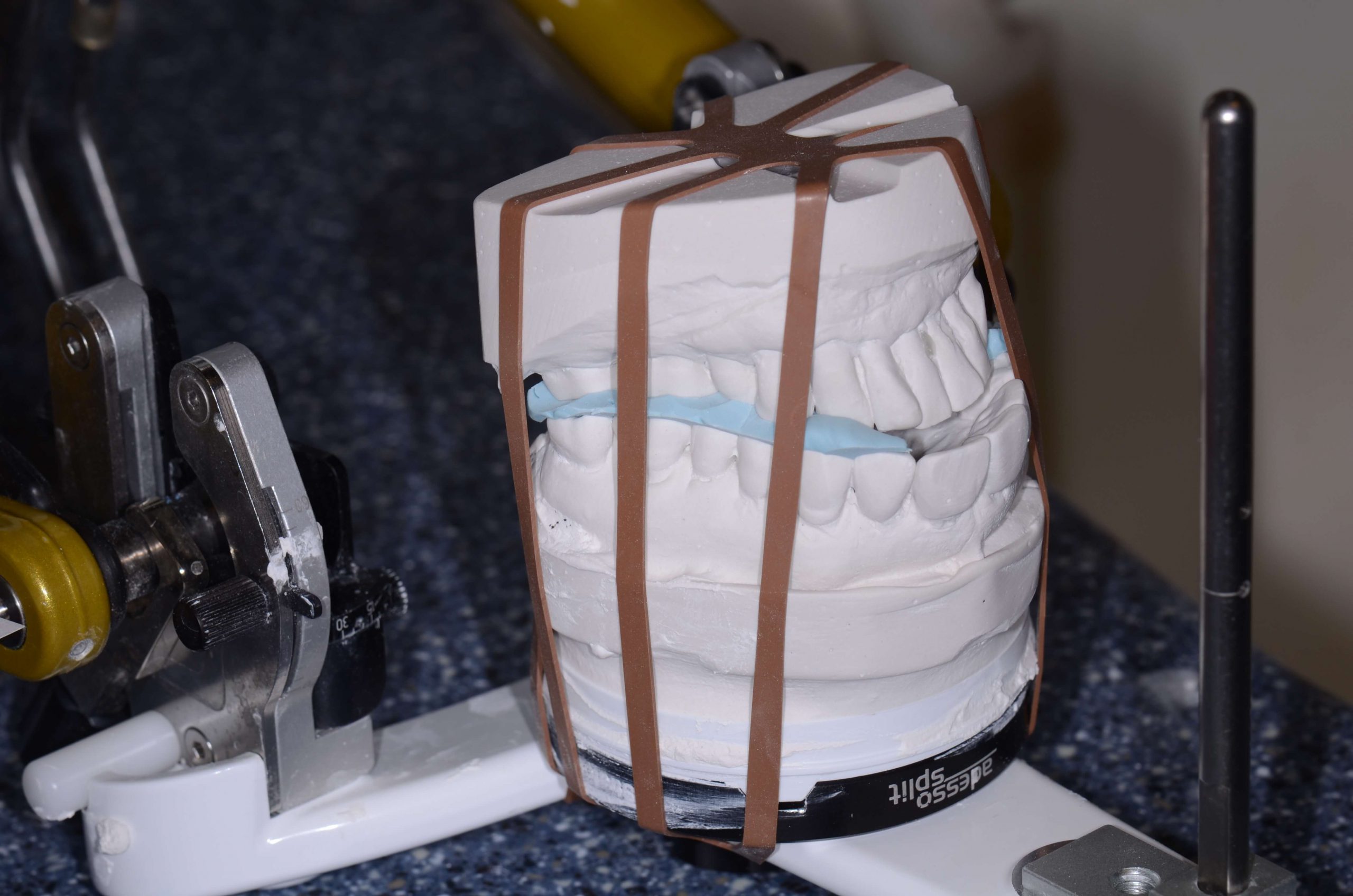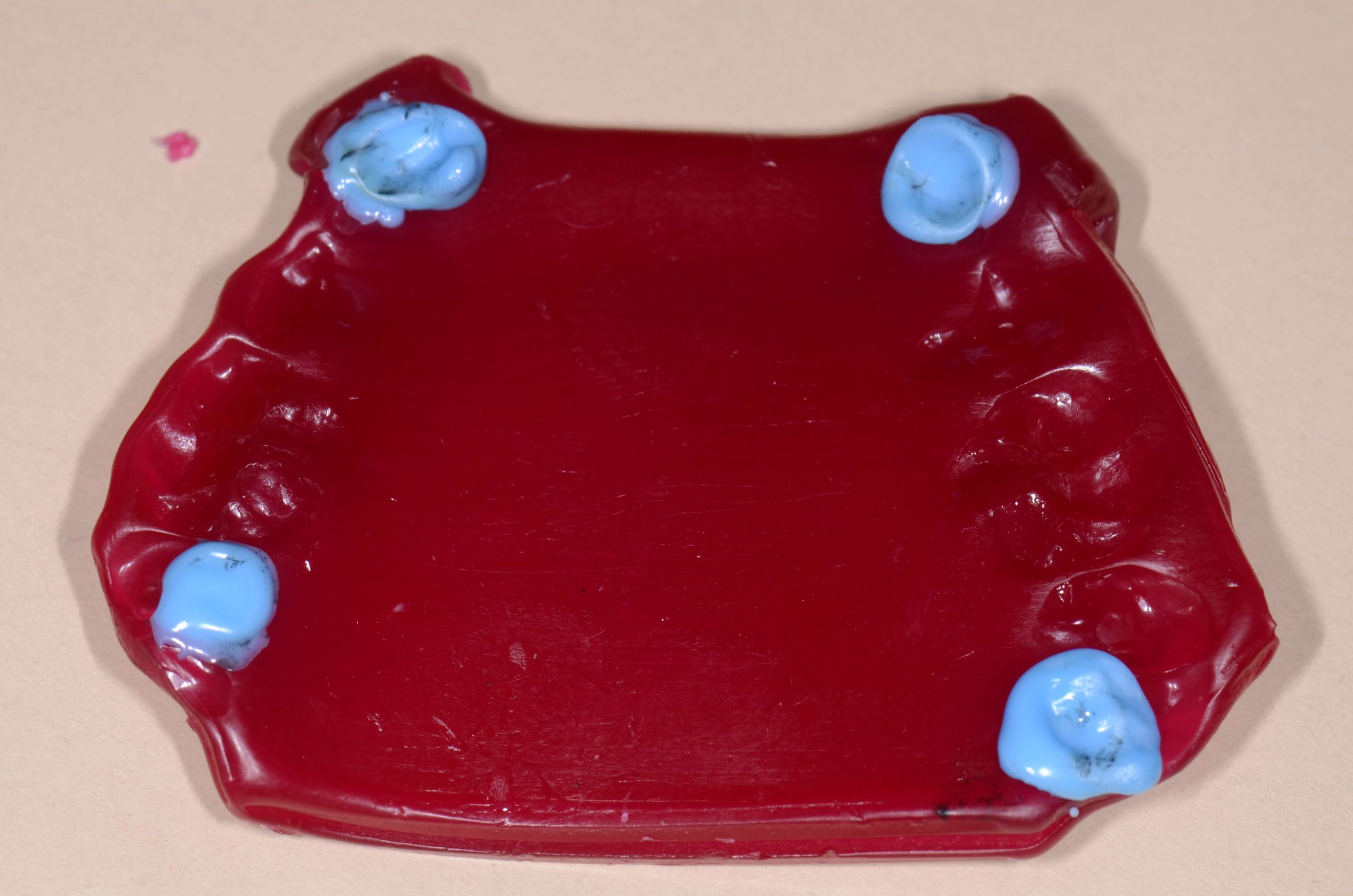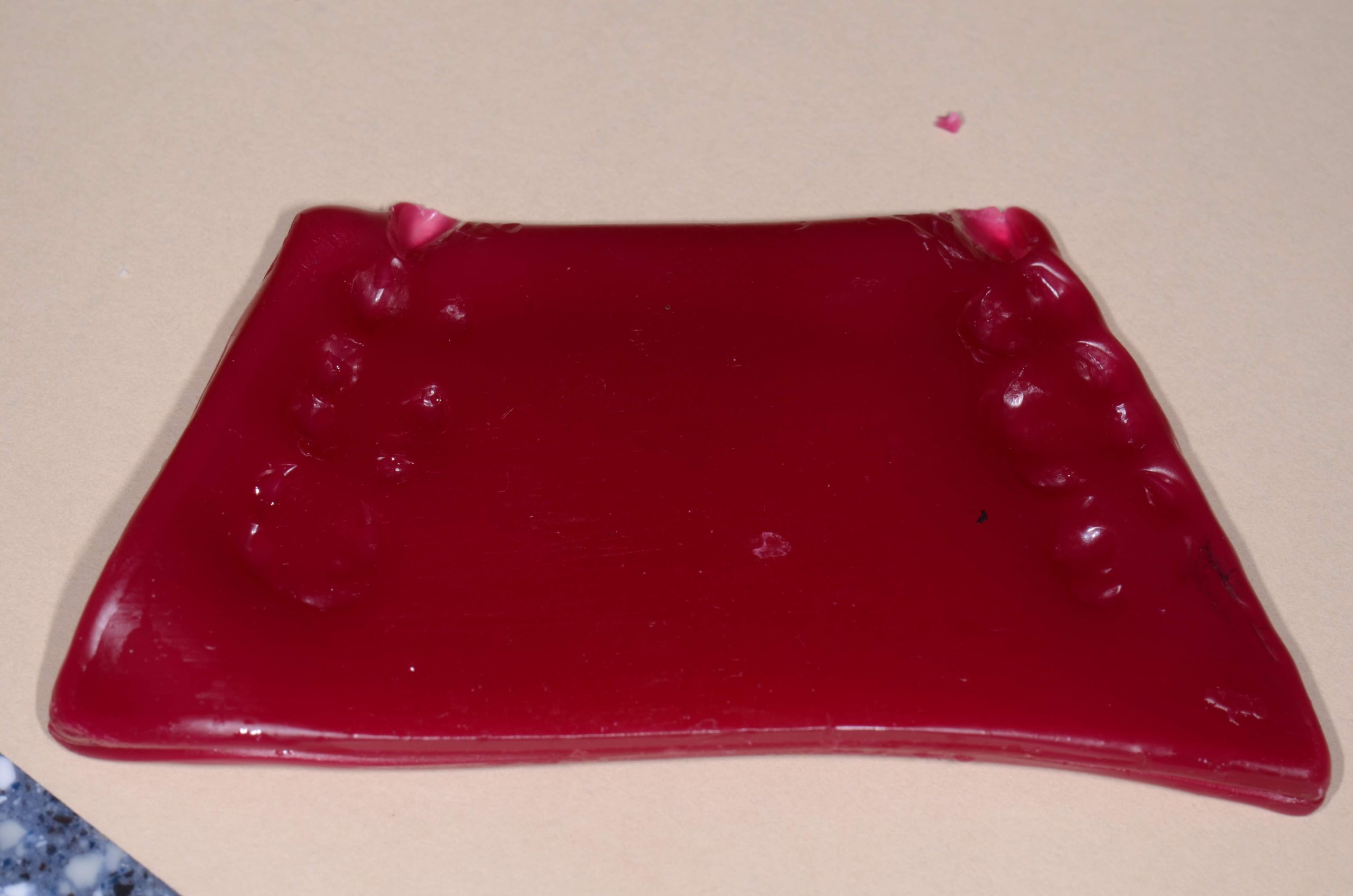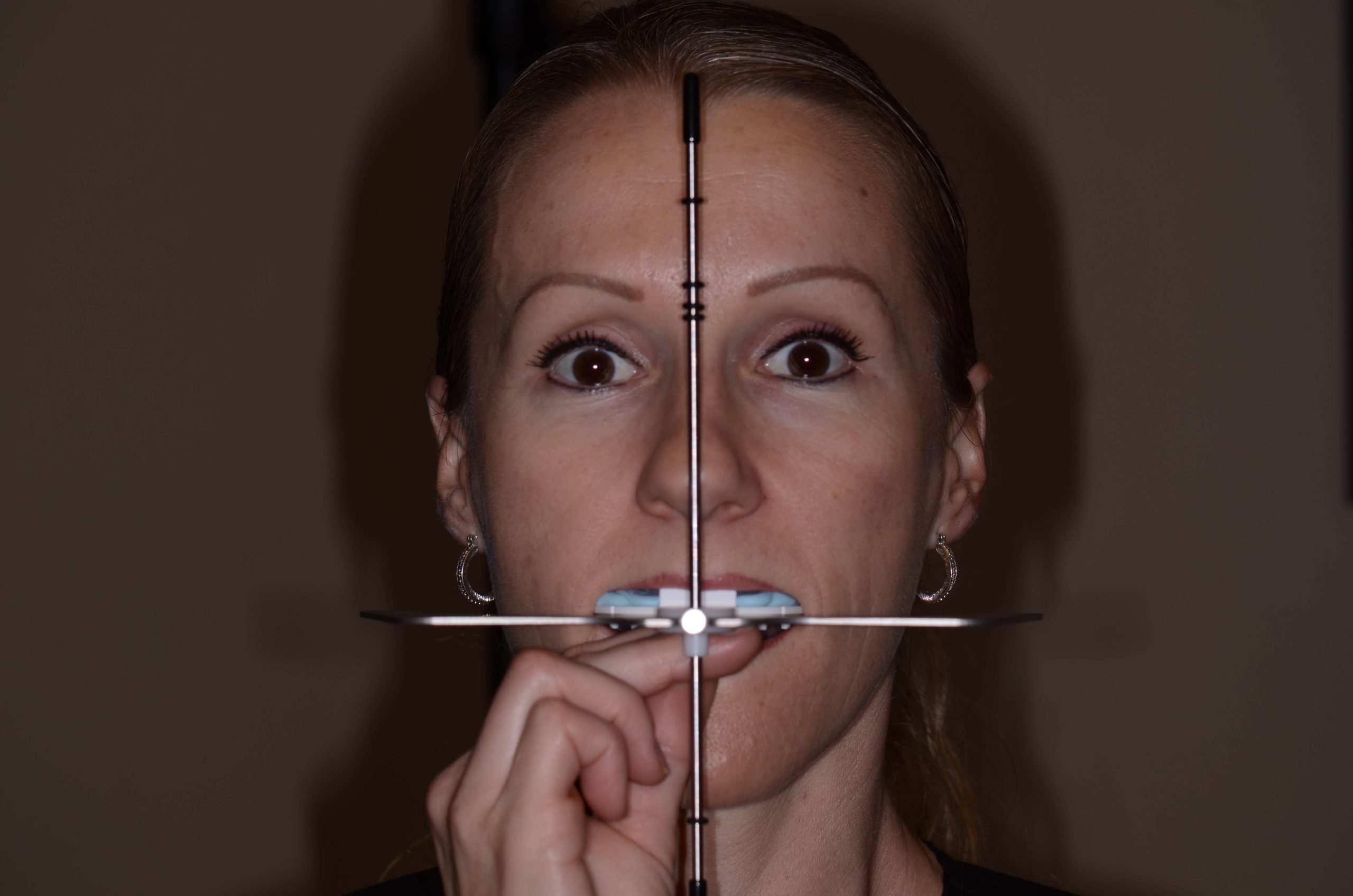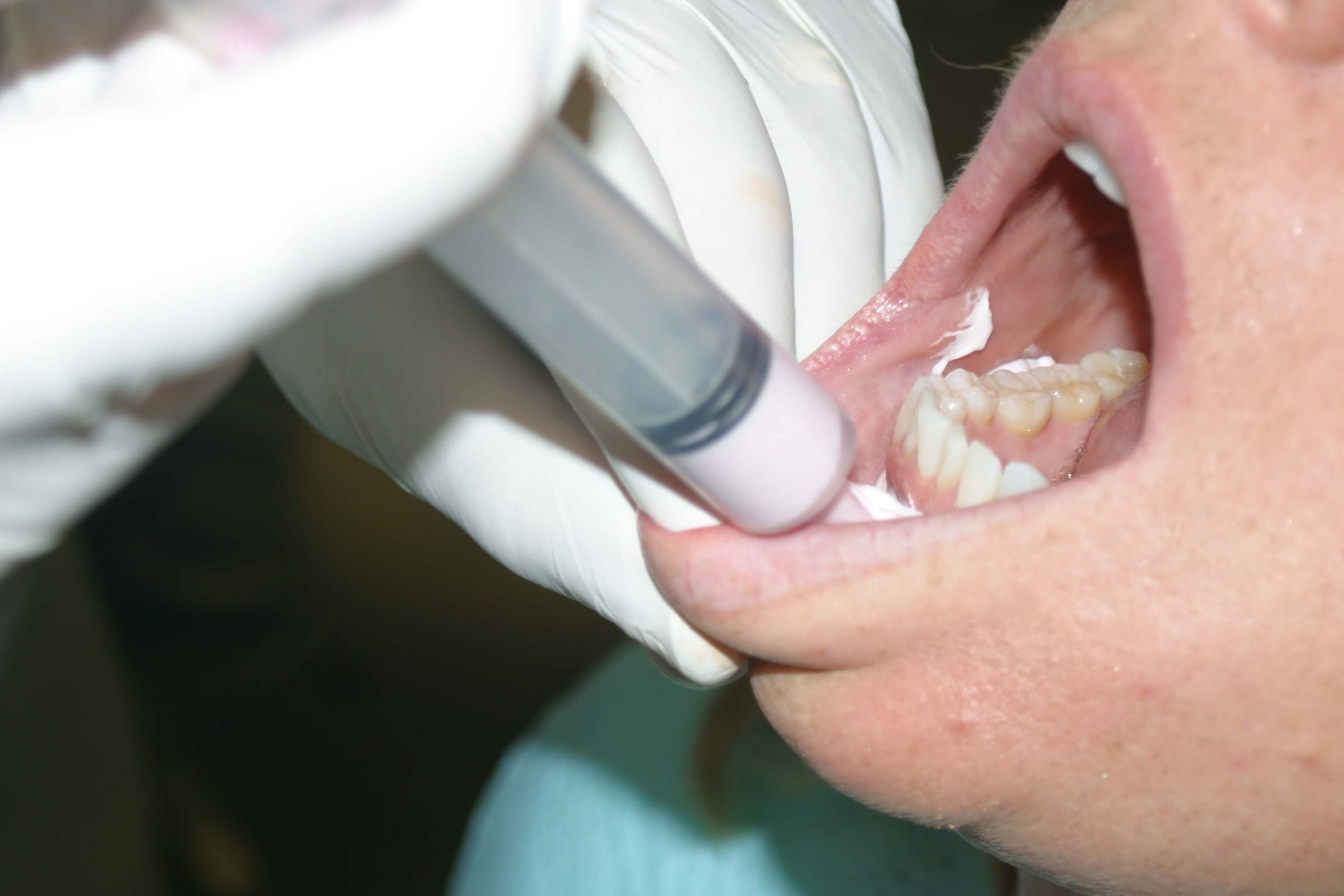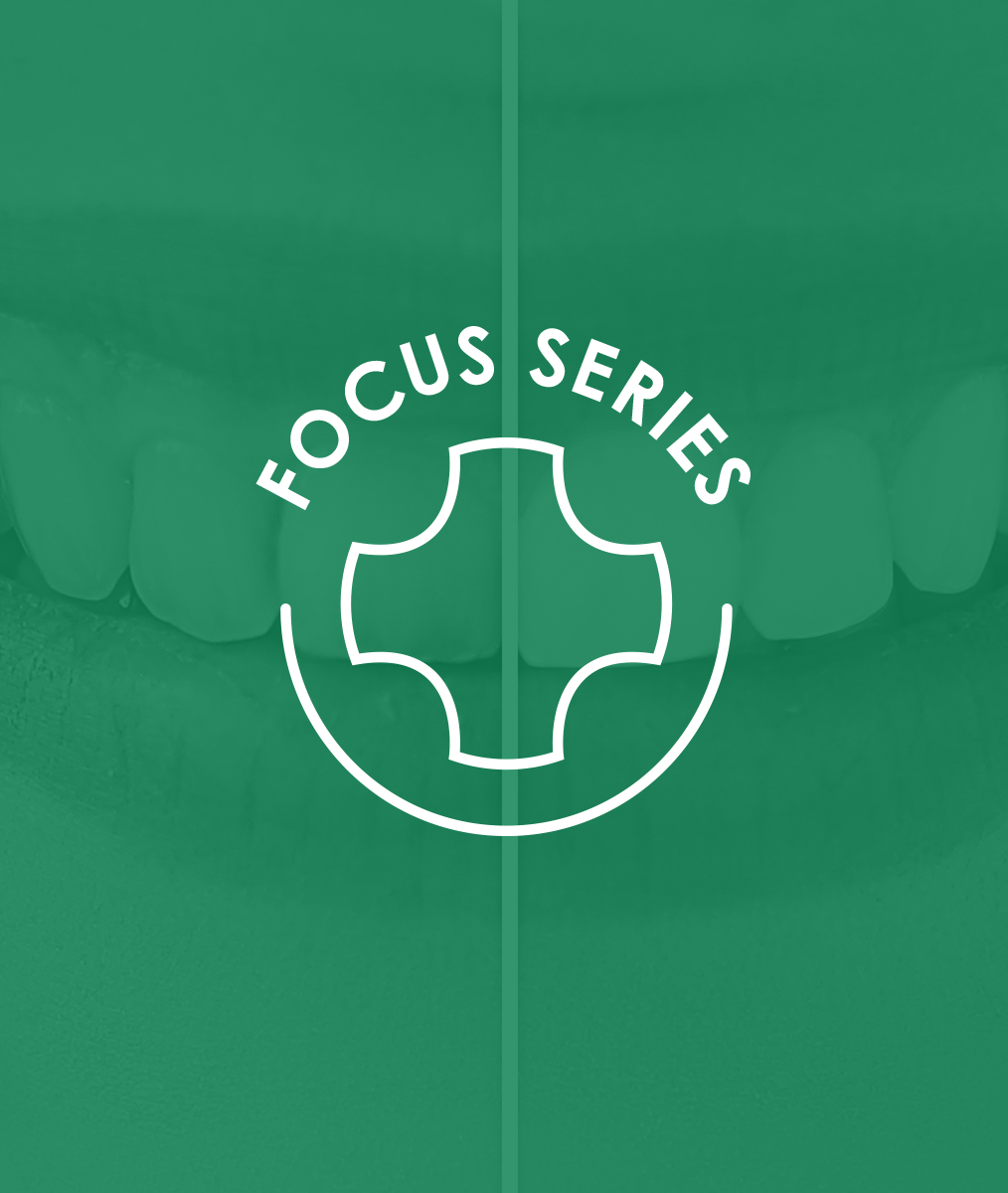Fleximount To Stabilize Lower Model
Learning from one another is one of the top benefits of dental continuing education.
One of the things that I value about continuing dental education is the opportunity to spend time with other dentists. I always learn something I can bring back to my office. Recently while lecturing at Midwestern Dental School to the faculty, on of the faculty members told me about a new way to stabilize lower models when mounting, and was even kind enough to give me some samples.
Stabilizing a lower model during mounting with centric relation records is critical to the accuracy of the mounting.
Over the years I have tried about every idea possible to optimize mounting the lower model. If the model moves in the bite registration due to pressure during mounting, tipping or shrinkage of the stone it interferes with the accuracy of the mounting. To overcome this I have tried hot glue, compound, rubber bands, hanger wire bent into a V and probably many more.
We realized the Fleximount was incredible the first time we used it. Sold by WhipMix and developed for their articulator systems, I will say I have used it on other systems, and as long as there is a knob on the upper member of the articulator it works fantastic. The Fleximount is trapped inside the stone, so they are disposable. The lower model is held with even pressure directly against the upper( if mounting in MIP) or the bite record, therefore no tipping forces are present as with other stabilizer systems. Because it stays in the stone, you can walk away and let it come to a complete set, instead of having to stand and remove the stabilizer while the mounting stone is still somewhat soft. Both of these features result in a very accurate mounting.
Once the stone is set you simply cut away the rubber band material that is not inside the mounting stone. Now you can finish and groom the lower mounting.
Related Course
Pankey Scholar 14B
DATE: August 15 2024 @ 6:00 pm - August 17 2024 @ 3:00 pmLocation: The Pankey Institute
CE HOURS: 0
Dentist Tuition: $ 3905
Single Occupancy with Ensuite Private Bath (per night): $ 290
“A Pankey Scholar is one who has demonstrated a commitment to apply the principles, practices and philosophy they learned through their journey at The Pankey Institute.” At its core,…
Learn More>
